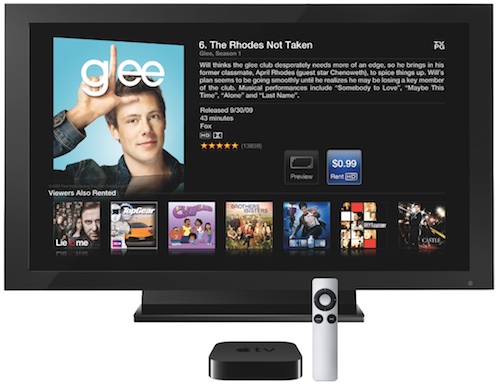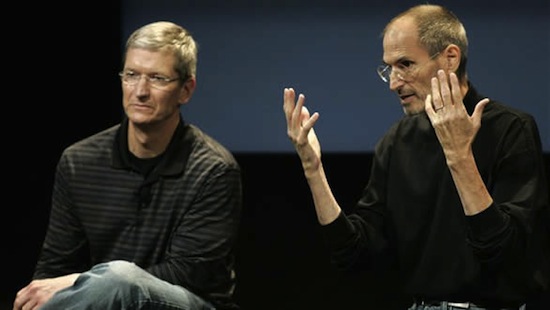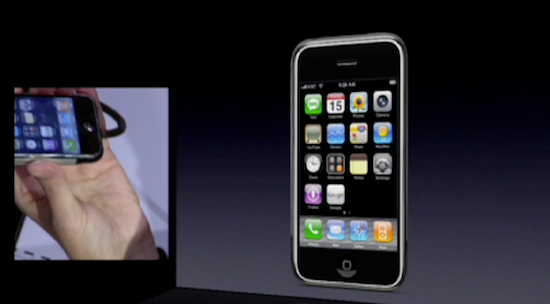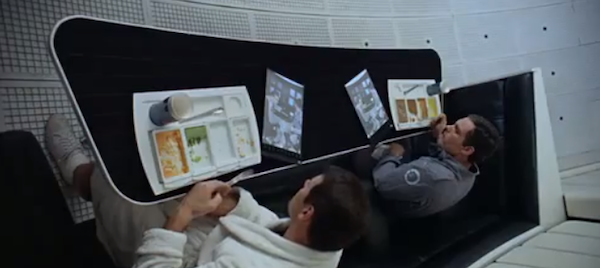Here are today’s @MacStoriesDeals on iOS, Mac, and Mac App Store apps that are on sale for a limited time, so get them before they end!
Posts in links
#MacStoriesDeals - Wednesday
Macworld Lab Tests The 2011 BTO Mac mini→
Macworld Lab Tests The 2011 BTO Mac mini
Macworld takes a look at a build-to-order (BTO) Mac mini with a 2.7GHz dual-core Core i7 processor, and 256 GB solid state drive. At $300 more than a standard 21.5-inch 2.5GHz Core i5 iMac (both machines come equipped with 4 GB of RAM), the maxed-out Mac mini was faster than the iMac at disk-intensive tests like file duplication, whereas performances on Apple’s recently updated small desktop box started to take a hit with graphic-intensive tasks such as playing Portal 2 or running Cinebench tests.
Not surprisingly, the BTO Mac mini with its SSD blazed past the iMac in disk-intensive tests such as the 2GB folder duplication (31 percent faster) and 4GB file unzip (42 percent faster). The BTO Mac mini also beat the iMac in our 4GB zip test (5 percent faster), our Pages import Word doc test (20 percent faster), and our Parallels WorldBench multitask test (4 percent faster).
Macworld concludes that the BTO Mac mini is a “pricey proposition” and the iMac is still faster at most tasks, though some users would prefer the Mac mini’s simple configuration in that they won’t end up with an additional screen, trackpad, and so forth.
Considering that you don’t get several important items with the Mac mini that you do get with the iMac—a keyboard, mouse/trackpad, display—the BTO Mac mini we tested is a pricey proposition. However, some people may not want a new display (or don’t like the iMac’s glass-covered displays) and new input devices, and the Mac mini’s small case is preferable than the Mac Pro’s bulky tower. For general use, the BTO Mac mini can keep up with the 21.5-inch 2.5GHz Core i5 iMac. But the iMac fares better with software that can take advantage of multiple cores or graphic-intensive tasks.
By getting rid of the optical drive and making room for an additional hard drive in the aluminum enclosure, Apple has turned the 2011 Mac mini into the most lightweight and configurable consumer-oriented Mac ever made. Check out Macworld’s full tests here.
Apple Removes TV Rentals from iTunes - Customers “Overwhelmingly Prefer Buying TV Shows”→
Apple Removes TV Rentals from iTunes - Customers “Overwhelmingly Prefer Buying TV Shows”
As first noted by AppleInsider, Apple has removed all options related to TV show rentals on iTunes, the Apple TV’s dedicated interface and its website, deleting a support document that detailed how users could rent episodes using credit in their iTunes accounts. .99-cent TV show rentals were unveiled last September as part of the Apple TV 2nd gen announcement, and touted as a big new feature from Apple with both ABC and Fox on board with their shows. Others, however, dismissed the initiative as a threat to the TV business model – prices were too low according to TV studios. TV shows could be rented from the iTunes Store and watched on a Mac or Windows PC, iPhone, iPad, iPod touch, or Apple TV. Users had 30 days to begin watching a TV show, and 48 hours to complete it.
Today, Apple confirmed to AllThingsD that, as customers prefer buying TV shows, they’ve canceled the rental program entirely. Instead, Apple is now recommending iTunes in the Cloud, an iCloud functionality already live for customers that allows for re-watching and streaming of any previously purchased content on any device. The option was introduced with the latest Apple TV software update.
iTunes customers have shown they overwhelmingly prefer buying TV shows,” Apple spokesman Tom Neumayr said. “iTunes in the Cloud lets customers download and watch their past TV purchases from their iOS devices, Apple TV, Mac or PC allowing them to enjoy their programming whenever and however they choose.
Apple is rumored to be working on a new technology to deliver video to televisions, but right now, the only option for purchasing, streaming and re-downloading TV shows remains iTunes in the Cloud.
CEO Tim Cook to Employees: “Apple Is Not Going to Change”→
CEO Tim Cook to Employees: “Apple Is Not Going to Change”
Following Steve Jobs’ resignation as Apple CEO, Ars Technica has obtained a copy of an internal email sent this morning by the company’s new CEO, Tim Cook, to all Apple employees. The full text of the letter is available here, however we’d like to highlight a section in which Cook explains and reassures how Apple is not going to change, and Steve’s inspiration and vision will live on under his “ongoing guidance”:
Steve has been an incredible leader and mentor to me, as well as to the entire executive team and our amazing employees. We are really looking forward to Steve’s ongoing guidance and inspiration as our Chairman.
I want you to be confident that Apple is not going to change. I cherish and celebrate Apple’s unique principles and values. Steve built a company and culture that is unlike any other in the world and we are going to stay true to that—it is in our DNA. We are going to continue to make the best products in the world that delight our customers and make our employees incredibly proud of what they do.
The letter echoes Steve Jobs’ sentiments on Apple and its future:
I believe Apple’s brightest and most innovative days are ahead of it. And I look forward to watching and contributing to its success in a new role.
Tim Cook will execute Apple’s vision and goal to make great products, in spite of the different kind of charisma that differentiates him from Steve Jobs. Titles change, but as Cook seems to confirm, ideals live on.
Steve Jobs, Google’s Vic Gundotra, And “Icon Ambulance” On A Sunday→
Steve Jobs, Google’s Vic Gundotra, And “Icon Ambulance” On A Sunday
Amidst all the speculation and conjectures surrounding Steve Jobs’ resignation as Apple CEO last night, Google’s Vic Gundotra has shared a great little anecdote about the former CEO’s proverbial attention to detail and willingness to get even the smallest wrong piece of interface fixed in order to provide users with a great experience when using Apple devices.
Gundotra recalls an episode from 2008, when he got a phone call from Steve Jobs – Gundotra was head of mobile applications at Google at the time – but he didn’t pick up. Vic was attending religious services when “Caller ID unknown” called, so he chose to ignore the call. The call was from Steve Jobs, who left a message asking to be called back because it was urgent.
The problem Steve Jobs needed to get fixed was a wrong shade of yellow in Google’s webclip icon for the iPhone:
So Vic, we have an urgent issue, one that I need addressed right away. I’ve already assigned someone from my team to help you, and I hope you can fix this tomorrow” said Steve.
“I’ve been looking at the Google logo on the iPhone and I’m not happy with the icon. The second O in Google doesn’t have the right yellow gradient. It’s just wrong and I’m going to have Greg fix it tomorrow. Is that okay with you?”
Of course this was okay with me. A few minutes later on that Sunday I received an email from Steve with the subject “Icon Ambulance”. The email directed me to work with Greg Christie to fix the icon.
You can find Gundotra’s full post over at Google+ – Gundotra eventually became Google’s public face in the iOS/Android clash for the mobile space, but he says that episode taught him a lesson about how CEOs should always care about details. Even shades of yellow, on a Sunday. That’s symbolic of Jobs’ career as a CEO, and a message that will live on as Apple continues down its road with a different chief executive officer.
[2008 Macworld keynote image via Arnold Kim]
Samsung Uses “2001: A Space Odyssey” Movie As Evidence Against Apple’s iPad Design→
Samsung Uses “2001: A Space Odyssey” Movie As Evidence Against Apple’s iPad Design
Florian Mueller at FOSS Patents reports on Samsung’s latest documents filed against Apple’s motion for preliminary injunction in the United States:
Ever since Apple started to assert the design of the iPad against other manufacturers, many people have been wondering whether there’s actually prior art for the general design of the iPad in some futuristic devices shown in sci-fi movies and TV series. And indeed, Samsung’s lawyers make this claim now in their defense against Apple’s motion for a preliminary injunction.
These newly provided documents include a screen grab of Stanley Kubrick’s 1968 movie “2001: A Space Odyssey”, which shows two “tablet devices” on a table. Samsung’s lawyers write:
As with the design claimed by the D’889 Patent, the tablet disclosed in the clip has an overall rectangular shape with a dominant display screen, narrow borders, a predominately flat front surface, a flat back surface (which is evident because the tablets are lying flat on the table’s surface), and a thin form factor.
The ongoing series of lawsuits between Apple and Samsung is getting really complex and difficult to follow, and this is the first example of something interesting Samsung will likely pursue in the coming weeks: providing prior art as evidence that Apple didn’t really invent anything new with the iPad’s design. I wonder if Samsung will use Pixar’s “The Incredibles” too?
The Size Of Apple’s New “Spaceship” Campus in Cupertino→
The Size Of Apple’s New “Spaceship” Campus in Cupertino
Ever since Apple CEO Steve Jobs first explained to the Cupertino City Council the company’s intention to build a new “spaceship-like” campus on the area Apple bought from HP last year, Mayor Gilbert Wong said “there’s no chance” the city of Cupertino would say no to Apple’s proposed plan – Apple is the biggest taxpayer in Cupertino, and the project is admittedly impressive with a 4-story building hosting 13,000 employees, a 1,000 seat new auditorium, its own power center and a slew of modern architectural advancements built with green technologies in mind. Beautiful renderings aside, Apple even went as far as promising they would restore the area’s native vegetation by teaming up with Stanford University.
But just how big would Apple’s new headquarters be? John Martellaro over at The Mac Observer did some math based on official drawings, Google Maps and scale marks and came away with the conclusion that the whole building is big. Very big. According to Martellaro, Apple’s spaceship would cover the Pentagon with a diameter of 492 meters:
Given that comforting sanity check, I measured the diameter of the Apple spaceship as 1615 ft, plus or minus a few ft., depending on where one places the ruler. That’s a radius of 807.5 ft.
So, if one could magically fly the future Apple spaceship to Arlington, VA and hover over the Pentagon, it would just slightly cover it.
Martellaro also compared the campus’ size to a nuclear aircraft carrier and WWII battleship in an interesting image you can check out here. Progress on Apple’s proposal to the Cupertino City Council can be tracked here.
[image via Cupertino.org]
From the boneheaded design file: Browsing Versions in Lion→
From the boneheaded design file: Browsing Versions in Lion
While some knew of the feature, and were anxious to use it, they couldn’t find it. I would have expected a function that deals with a file to be on the File menu. Nope. Apple has it in the title bar, just where you are sure to miss it. […] When you finally do figure out how to browse your versions, your entire desktop changes, and you wind up in the Time Machine GUI (which Apple calls “The Star Field”), even though you never invoked Time Machine. As my colleague Erica Sadun points out, why introduce another system?
Mel Martin on TUAW discusses how Versions (and similiarly the Auto Save functions in the titlebar of an application) are confusing to use and hard to find compared to the already intuitive menubar (the second place people look after they can’t find something in the toolbar). Let’s talk about Mel’s points real quick: why did Apple make versions so… spacey?
The biggest reason is because it simply draws parallels with Time Machine. Apple wants to associate anything that has do with recovering files with the paradigm of literally being able to travel back in time and pull in old documents (in Versions’ case, pull in old bits of text or images you initially revoked which is both very hands-on and extremely powerful). The separate UI exists so you visually see old changes and only bring back what you need — browsing a list with timestamps then manually merging two versions of the same document from your desktop doesn’t sound better either (especially since you then can’t see what changes were made without opening each old version).
I do think Versions would be good as a menubar item. I agree that new Mac users won’t look to the titlebar for accessing this feature (unless they’ve vigorously read Apple’s Lion pages). When people look to try out new features (and don’t know where to find them), I imagine they try to search for the menu item through Help as I often do. In Versions’ case, it’s nowhere to be found. I think Versions’ UI itself is okay, albeit sometimes buggy and slow which will be improved, but getting there can be the issue.
101 ways to save Apple, revisited→
101 ways to save Apple, revisited
Some of my favorites:
22. Create a new kids’ computer, an upgradable Wintel-compatible machine. Bad advice. Really, really bad advice.
60. Abandon the Mach operating system you just acquired and run Windows NT kernel instead. Bad advice. Really, really bad advice.
88. Acknowledge that there are people with repetitive stress injuries. Good advice. Apple didn’t follow it, though.
There are lots of gems in this great finding by Shawn Blanc, who points to the weblog of Rafe Colburn, reminiscing on an 1997 article by Wired’s James Daly titled, “101 ways to save Apple”. I got a laugh out of number 88, and you can read the full list (with commentary) at RC3.org.









